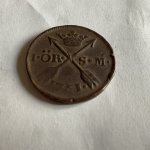K-Man
Full Member
Missing WWII Sailor From Wisconsin Identified
WASHINGTON (AP) - The remains of a Wisconsin sailor missing from World War II have been identified.
The Department of Defense POW/Missing Personnel Office says the remains of Ensign Robert G. Tills of Manitowoc will be returned to his family for burial with full military honors.
Tills was the first U.S. Navy officer to die in defense of the Philippine Islands during World War II.
He was on a PBY-4 Catalina Flying Boat moored in Malalag Bay on Dec. 8, 1941, when the plane was sunk by Japanese aircraft. Another crewman saw machine gun bullets hit and kill Tills.
But, Tills' remains were not recovered until last year when wreckage of the aircraft was discovered in the bay. Scientists used dental comparisons and other forensic tools to identify Tills
WASHINGTON (AP) - The remains of a Wisconsin sailor missing from World War II have been identified.
The Department of Defense POW/Missing Personnel Office says the remains of Ensign Robert G. Tills of Manitowoc will be returned to his family for burial with full military honors.
Tills was the first U.S. Navy officer to die in defense of the Philippine Islands during World War II.
He was on a PBY-4 Catalina Flying Boat moored in Malalag Bay on Dec. 8, 1941, when the plane was sunk by Japanese aircraft. Another crewman saw machine gun bullets hit and kill Tills.
But, Tills' remains were not recovered until last year when wreckage of the aircraft was discovered in the bay. Scientists used dental comparisons and other forensic tools to identify Tills





